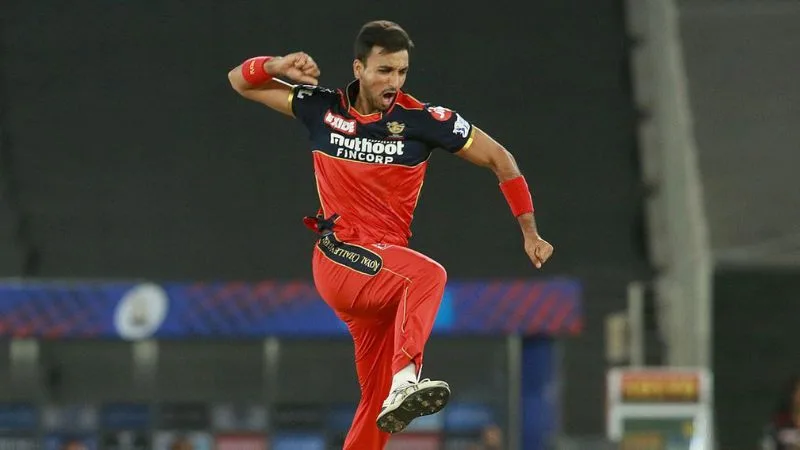The transformation of T20 cricket has posed significant challenges for bowlers to deliver exceptional performances consistently. Often, they find themselves at the receiving end of onslaughts unleashed by top-tier batsmen, a trend mirrored in the IPL.
Amidst the struggles, however, there are moments of brilliance where bowlers shine. Each IPL season witnesses the emergence of a standout performer, exemplified by the recipient of the prestigious Purple Cap. Awarded to the bowler with the highest wickets tally in a single season, the Purple Cap recognizes individual excellence amidst the fierce competition.
Amid batsmen dominating the limelight, these outstanding bowling displays add a captivating dimension to the IPL. They testify to the resilience and skill of bowlers in an environment predominantly favoring batsmen. The quest for the Purple Cap showcases the determination and talent of these individuals, contributing to the excitement and unpredictability that define T20 cricket and the IPL in particular.
Take a peek at the IPL’s top wicket-taker of a single season. Every year, one bowler rises above the rest, claiming the coveted Purple Cap for their exceptional performance. It’s a testament to skill and resilience in a fiercely competitive arena.
Most Wickets in IPL One Season:
| Player’s Name | Match | Wicket | Runs | Season |
| Harshal Patel | 15 | 32 | 459 | 2023 |
| DJ Bravo | 18 | 32 | 497 | 2013 |
| Kagiso Rabada | 17 | 30 | 548 | 2020/21 |
| Lasith Malinga | 16 | 28 | 375 | 2011 |
| James Faulkner | 16 | 28 | 427 | 2013 |
| Mohammad Shami | 17 | 28 | 522 | 2023 |
| Mohit Sharma | 14 | 27 | 361 | 2023 |
| Jasprit Bumrah | 15 | 27 | 404 | 2020/21 |
| Yuzvendra Chahal | 17 | 27 | 527 | 2022 |
| Rashid Khan | 17 | 27 | 552 | 2013 |
1. Harshal Patel (32 wickets)
In the IPL season, Harshal Patel stood out with an impressive performance, claiming 32 wickets in 15 matches. With an economy rate of 8.14 and a stellar average of 14.34, Patel’s best bowling figures of 5/27 showcased his skill and impact on the field. His consistent displays made him a formidable force throughout the tournament.
2. Dwayne Bravo (32 wickets)
In his IPL campaign, DJ Bravo exhibited exceptional prowess, securing 32 wickets across 18 matches. With an average of 15.53 and an economy rate of 7.95, Bravo’s best bowling figures of 4/42 underscored his impact on the field. His consistent performance throughout the season made him a valuable asset to his team.
3. Kagiso Rabada (30 wickets)
In his IPL campaign, Kagiso Rabada showcased remarkable skill, clinching 30 wickets in 17 matches. With an average of 18.26 and an economy rate of 8.34, Rabada’s best bowling figures of 4/24 highlighted his impact on the field. His consistent performance throughout the season solidified his reputation as one of the premier fast bowlers in the league.
4. Lasith Malinga (28 wickets)
In the IPL season, Lasith Malinga showcased his bowling mastery, claiming 28 wickets in 16 matches for Mumbai Indians. With an impressive average of 13.39 and an economical economy rate of 5.95, Malinga’s best bowling figures of 5/13 highlighted his immense impact on the field, solidifying his status as one of the league’s premier fast bowlers.
5. James Faulkner (28 wickets)
In the IPL season, James Faulkner displayed exceptional bowling prowess, securing 28 wickets in 16 matches. With an average of 15.25 and an economic economy rate of 6.75, Faulkner’s best bowling figures of 5/16 underscored his significant impact on the field. His consistent performance throughout the season cemented his reputation as a top-notch bowler.
6. Mohammad Shami (28 wickets)
Mohammed Shami demonstrated his bowling prowess, securing 28 wickets in 17 matches. With an average of 18.64 and an economic economy rate of 8.03, Shami’s best bowling figures of 4/11 highlighted his significant impact on the field. His consistent performance throughout the season solidified his reputation as a valuable asset for his team.
7. Mohit Sharma (27 wickets)
In the IPL, MM Sharma showcased his bowling prowess, claiming 27 wickets in 14 matches. With an average of 13.37 and an economic economy rate of 8.17, Sharma’s best bowling figures of 5/10 underscored his significant impact on the field. His consistent performance throughout the season solidified his reputation as a key contributor to his team.
8. Jasprit Bumrah (27 wickets)
In the IPL, representing Mumbai Indians, Jasprit Bumrah displayed his bowling prowess, securing 27 wickets in 15 matches. With an average of 14.96 and an economic economy rate of 6.73, Bumrah’s best bowling figures of 4/14 highlighted his substantial impact on the field. His consistent performance solidified his reputation as a key asset for his team.
9. Yuzvendra Chahal (27 wickets)
In the RR lineup, Yuzvendra Chahal showcased his bowling prowess, securing 27 wickets in 17 matches. With an average of 19.51 and an economic economy rate of 7.75, Chahal’s best bowling figures of 5/40 underscored his significant impact on the field. His consistent performance throughout the season solidified his reputation as a valuable asset for his team.
Rashid Khan (27 wickets)
Representing GT, Rashid Khan showcased his bowling prowess, securing 27 wickets in 17 matches. With an average of 20.44 and an economic economy rate of 8.23, Khan’s best bowling figures of 4/30 underscored his significant impact on the field. His consistent performance throughout the season solidified his reputation as a key contributor to his team.
Stay updated with all the cricketing action, follow Cricadium on Facebook, Twitter, and Instagram



 Win Projections to be updated soon
Win Projections to be updated soon







